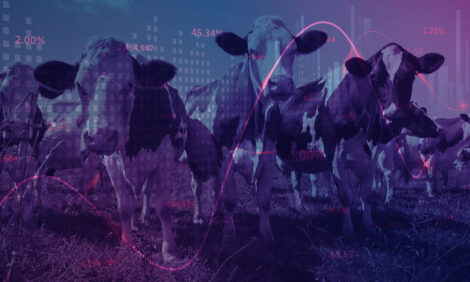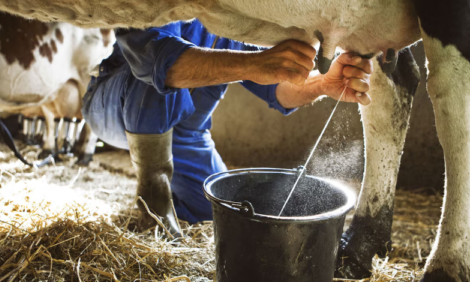



Brucellosis: Risk to cattle and people
Brucellosis spreads when infected cattle give birth or abort[Excerpt of a report by the World Organization for Animal Health: The State of the World’s Animal Health 20251]
Brucellosis is a silent, devastating disease that affects both animals and humans, causing reproductive issues in livestock, economic losses for farmers and debilitating illness in people. It is caused by Brucella bacteria, a zoonotic pathogen that spreads from animals to humans, with symptoms resembling the flu, including fever, joint pain and fatigue. Brucellosis can persist for weeks or even months and may recur, making it a serious public health issue.
The disease spreads primarily when infected animals give birth or abort, releasing large amounts of bacteria into the environment. The bacteria can survive outside the animal for several months, particularly in cool, moist conditions, making environmental contamination another major concern. The bacteria also colonize the udder and contaminate milk, which can be a direct source of infection for humans, especially if consumed raw or unpasteurized.
Dairy
Brucellosis leads to poor reproductive performance in infected animals, including abortions, infertility, stillbirths and weak offspring. In dairy farming, brucellosis can decrease milk production. Farmers may also face costs related to disease control measures, such as testing, culling infected animals, and implementing biosecurity measures to prevent the spread of the disease.
In many cases, infected animals show no obvious signs of illness, even as they continue to shed the bacteria into their surroundings. This allows the disease to spread undetected within herds and to new areas, complicating both diagnosis and control efforts. The ability of Brucella bacteria to persist in asymptomatic carriers makes surveillance and containment far more difficult, requiring vigilant monitoring and proactive intervention strategies.
Integrated control strategy
Vaccination has proven to be one of the most effective tools in controlling brucellosis, especially in regions where the disease is endemic. By vaccinating cattle, the incidence of infection can be significantly reduced, which in turn lowers human exposure. The primary vaccines used are Brucella abortus S19 and Brucella abortus RB51. Vaccination helps prevent the spread of the disease, reduces the contamination of milk and meat, and lowers the risk of transmission to humans and wildlife.
While vaccination is a powerful tool, it is not a standalone solution. One of the most significant hurdles is achieving high vaccination coverage, as a large percentage of livestock must be immunized to disrupt the transmission cycle. In many low-resource settings, logistical and financial constraints make widespread vaccination difficult to implement.
Some farmers are reluctant to vaccinate livestock, due to temporary declines in milk production or minor reproductive issues following vaccination. Vaccinated animals may test positive for brucellosis in common diagnostic tests, making it difficult to distinguish between infected and vaccinated animals. Improved diagnostic tools that differentiate between vaccinated and naturally infected animals are essential for effective surveillance.
Vaccination must be integrated into a broader, multipronged approach to controlling brucellosis. Effective disease surveillance is crucial, with regular testing of livestock through blood and milk screening to monitor infection rates and detect outbreaks early. Culling infected animals remains a necessary measure to reduce the reservoir of infection. There must be regulations on raw dairy consumption, as unpasteurized milk remains a primary source of human brucellosis.
Improving biosecurity on farms is essential for preventing the introduction and spread of Brucella bacteria. Farmers need to disinfect equipment, limit livestock movement and use protective gear when handling potentially infected animals. Training in proper vaccination techniques is crucial.
Countries that have successfully implemented comprehensive control strategies, including vaccination, surveillance, culling, dairy safety regulations and farm biosecurity, have seen dramatic reductions in brucellosis cases. Vaccination remains a cornerstone of this strategy, but success depends on addressing logistical barriers, improving farmer engagement, and reinforcing other disease control measures.
Reference
1World Organization for Animal Health (2025). – The State of the World’s Animal Health 2025. Paris, 120pp. https://doi.org/10.20506/woah..... License: CC BY-SA 3.0 IGO.



